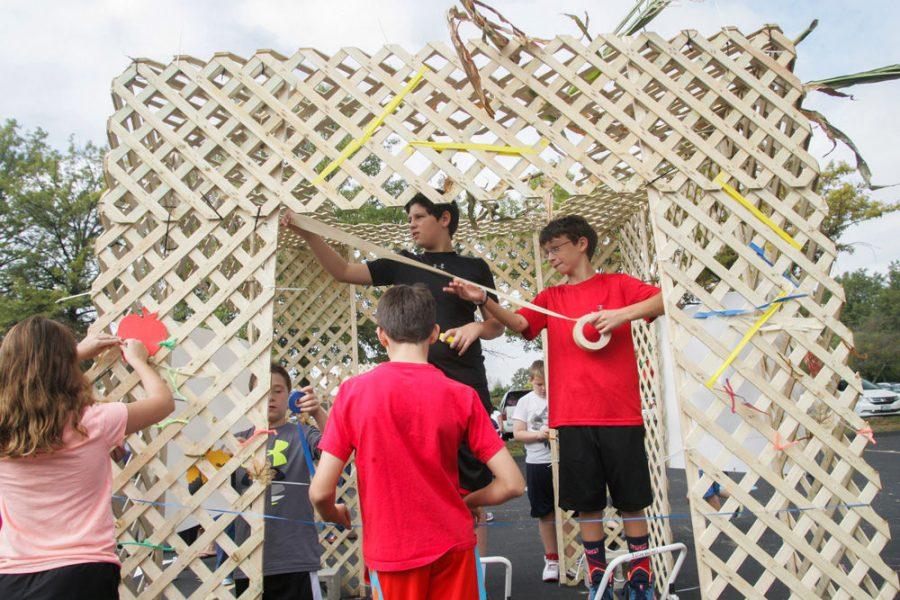Why Sukkot is actually the best holiday for kids
Published September 20, 2018
Here’s the short version of this article.
If you leave your kids home on the High Holidays so you can have grownup praying time, bring your kids on Sukkot.
If you bring your kids to the High Holidays, then bring them back on Sukkot.
ADVERTISEMENT
Sukkot is the best kids holiday. You just might not know it yet.
Now the longer version, if you need more convincing.
Sukkot is particularly awesome for kids who love building, engineering or arts and crafts (so, most kids). You get to build a sukkah at your home or synagogue, or if you don’t have access to those, build one out of a cardboard box in your living room.
Once you have a structure, you get to design and decorate it. A sukkah is a great place to hang all that artwork that comes home from school, or to encourage fine motor skills by cutting and creating paper chains. Then you get to hang out and admire your handiwork, or even add to it, for a whole week.
Sukkot is a holiday that encourages movement during services. Instead of all the sitting and standing, and more sitting and standing, that characterizes most services, on Sukkot you get to both shake the lulav and walk around the sanctuary with it. As a bonus, the lulav is a great sensory tool for your kids to look and interact with if they are in services and looking for something to do.
Sukkot is a holiday when we get to be outside. After the hours of Rosh Hashanah and Yom Kippur inside a building, Sukkot is a literal breath of fresh air, as we eat our meals in the sukkah. And for kids (and adults) who enjoy being outdoors, we are encouraged to do as many of our regular indoor activities outside. Sukkot is a time when we can draw, do homework, chat with our friends and even sleep outdoors, making it Judaism’s official camping holiday.
Finally, the messages of Sukkot are very powerful: First, there’s the message of welcoming. The sukkah is open, welcoming in anyone who wants to join.
ADVERTISEMENT
Second, in a tradition called ushpizin, we symbolically welcome characters from the Torah to join each day, but your family could discuss other people you want to invite to join you, whether it be a grandparent who is far away or a refugee family. Each day you can welcome someone else, and even hang up photos or drawings of that person as a reminder of their presence.
Sukkot also reminds us to think about our vulnerability, as we sit outside in a temporary structure exposed to the elements. We are reminded of the blessings of having a roof over our heads.
Sukkot is a perfect time to contribute good deeds or tzedakah to a community in need, volunteer at a homeless shelter or even buy someone on the street a sandwich. Sukkot asks us to remember that at any moment, we could no longer be protected by physical space—so we walk through this holiday trying to leave the world a little better than it was before.
Rabbi Rebecca Rosenthal is the director of youth and family education at Central Synagogue in New York City where she gets to spend her time dreaming about ways to engage families with children. She and her husband live in New York City with their three children.)















